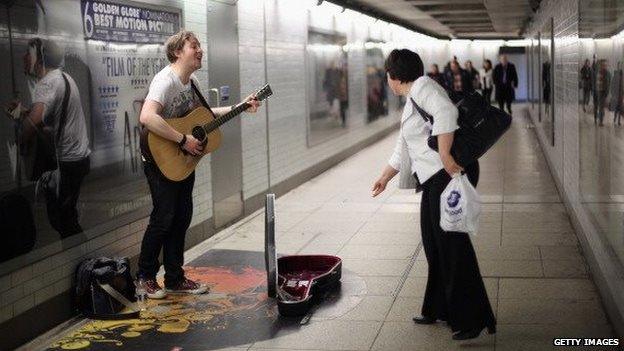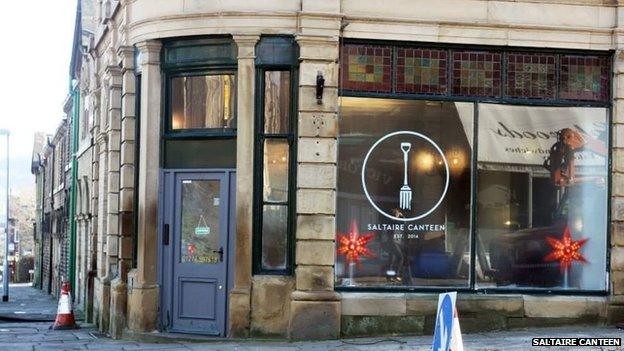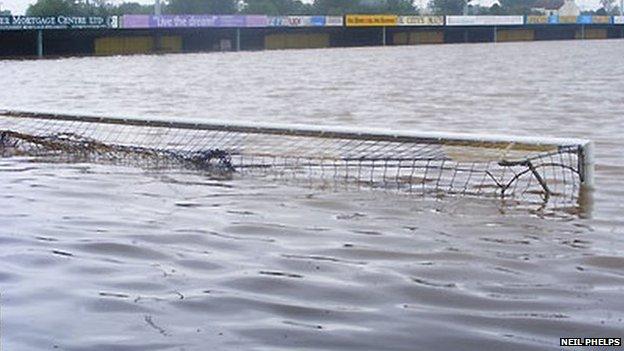Do pay-what-you-want pricing strategies really work?
- Published

Street performers and buskers work on a pay what you want basis, but can it work elsewhere?
As an orchestra launches a pay-what-you-want show to get new people through the door, BBC News looks at whether it really works.
It seems a risky tactic, provide a service then let people decide how much (if anything) they want to pay for it.
It has been how street performers and artists have operated, passing around a hat for spectators to fill, but now more established and high-profile groups are trying it.
The Halle orchestra will let people coming to their show in Manchester pay whatever they like.
Chief executive John Summers said it would allow new audiences to "experience the Halle and enjoy some incredible music, but on their own terms".
But they are not the first.
Rock groups Radiohead and Wheatus both released albums for which they charged fans only what they wanted to pay.
A year after the 2007 release of Radiohead's In Rainbows, Rolling Stone magazine reported that more people had downloaded the album free than had paid for it, but it had still generated $3m in total sales.

People going to see Free To Stay at the ARC in September will be able to pay whatever they want
The ARC arts Centre in Stockton-on-Tees launched a six month trial of a pay-what-you-want scheme in January, and they are so pleased with it they have now extended it until the end of the year.
Audiences attending the theatre's drama, dance and spoken word shows pay whatever they want at the end of the show - including nothing if they deem that's what it was worth.
But marketing officer Anne-Marie O'Donnell said people were prepared to pay.
She said: "It has been a great success, we are seeing more people coming to the shows than before and people have given quite generously."
Audience numbers were up 58% on the same period in 2014 with 15.6% attending the theatre for the first time compared to 10.8% the year before.
Annabel Turpin, chief executive of ARC, said: "[It] sent a message to customers that we were so confident of what we were offering that if they didn't like it, they didn't have to pay - and what better message is there for someone who feels like they are taking a risk?"
Leeds-based theatre company Slung Low has been running a similar scheme for two years.
The average donation is £7.50 for an hour's performance.

Radiohead's 2007 album In Rainbows was released through a pay what you want system
There are more than 60 cafes in the UK which are part of the Real Junk Food network, all of which have only two rules.
At least 90% of the food they serve would otherwise have been wasted, and all must offer a pay-what-you-feel scheme.
Project director Duncan Milwain said the scheme was proving so successful at his Saltaire Canteen near Bradford it has gone from being open three days a week to six and employs three people.
He said: "The big question is do people pay and the answer is a definite yes.
"Some pay more than others, some just can't pay and some are more than generous."

Customers at the Saltaire Canteen can pay whatever they want for their food
Diners are asked to put whatever they feel happy paying into a brown envelope at the end of their meal.
Mr Milwain said: "We have no idea what people are giving, it takes away any embarrassment people might feel.
"If they do not want to pay or simply cannot afford to then that is absolutely fine.
"Some people are flummoxed by it so I will say to them to think about what they might pay for a similar meal in a more conventional restaurant, but it really is totally up to them what they give."
He said typical payments were upwards of £5 for main meals, but each diner differs.

The Saltaire Canteen opened in December 2014 and uses food which otherwise would have gone to landfill or anaerobic digestion
Football is also dipping its toe into the world of pay-what-you-want.
National League North side Gloucester City AFC have played several games in the past couple of seasons in front of fans who only pay what they feel is appropriate.
And the club made more money on those games than through its normal fixed price matches, according to club chairman Mike Dunstan.
"We do it for two reasons, one in the hope of generating decent money, but also to try to encourage people to give us a try," he said.
"Because of the problems we have had, like our ground being flooded, our loyal following will generally put in the normal price or more - lots of £20 notes and so on.
"Non-regulars didn't take advantage, a lot of people paying £10 rather than £12, and a few fivers but nobody refused to pay anything.
"All in all it was positive from a publicity point of view, from a public relations point of view and financially, so a real win-win."

Gloucester City have been playing in Cheltenham since their ground was flooded in 2007, one reason fans are happy to give more to the club at pay-what-you-want matches according to chairman Mike Dunstan
Relying on the public to pay does not always work though.
Lowestoft Seafront Air Festival was axed in 2012 due to a lack of funds and organisers confirmed last year that it would not return.
The annual event cost £300,000 to stage but organisers refused to charge people to attend, instead asking for voluntary donations.
Organiser Paul Bayfield said: "The public could have supported us better and so could some of the local businesses, because the people who made the most from the air show contributed the least."
But even for those for whom it is working, is pay-what-you-want sustainable?
Not according to marketing professor Dr Ben Voyer from the ESCP Europe Business School and London School of Economics.
"There are three kinds of consumer" he said.
"The first is the savvy shopper who will pay close to zero because he wants the best deal. I would say this accounts for about 1 in 4 consumers.
"The majority, however, will pay what they consider to be a fair price, they do not want to engage in difficult decisions so to avoid the headache they will base their price on what they think the value is.
"They also don't like to feel they are making a steal.
"The third kind will pay more than the value, either to show power or because they really love the product and want to become like a patron or sponsor.
"One of the reasons this works is because of the novelty factor, but as people get used to it the novelty wears off so people will start paying less and they also speak to others who might not be paying as much.
"And the longer you do it the more you will attract the first type of consumer who is coming simply to get a deal.
"As a promotion it works really well for a company, it gets people into the habit of using their product and for most people, once they know a product or service they will continue to use even if you set a price.
"And the company can learn the real value of what it is offering so as a market research tool it is excellent.
"But in the long run it is a dangerous marketing technique."
- Published21 July 2015
